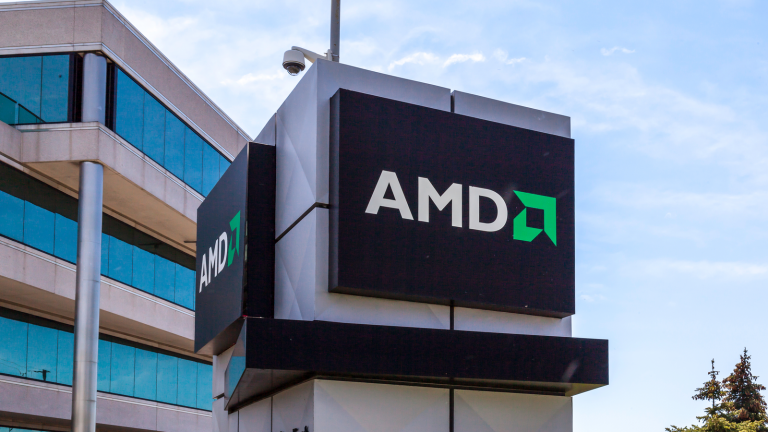On May 16, Wolfe Research announced its tactical decision to move off Nividia (NASDAQ:NVDA) and onto Advanced Micro Devices (NASDAQ:AMD) stock to benefit from AI.
No one is more pro-Nvidia than I am. I’ve been in its corner for several years, calling CEO and co-founder Jensen Huang “America’s Most Influential CEO,” in September 2021.
Huang jumped on AI long before it was fashionable to do so. A decade later, Nvidia shareholders are rightly benefiting from this prescient long-term bet.
However, AMD CEO Lisa Su is also one of America’s best chief executives. If you can own both stocks, you probably should. They’re both excellent long-term buys.
Returning to Wolfe’s decision to move Nvidia off its Wolfe Alpha List — the firm’s version of the Goldman Sachs Conviction List — and replace it with AMD.
“Our views on NVDA and AMD haven’t changed, but the relative move in stock prices YTD causes us to make a tactical shift in priority, moving AMD to the Wolfe Alpha List, replacing NVDA, which is up ~90% YTD and ~100% since it was added to the list in November 2023,” Investing.com reported Wolfe Research’s note to clients.
It makes total sense. Here’s why.
AI and AMD Stock
The company launched its MI300 AI GPUs in December. Because of their early success, AMD’s data center revenue increased by 80% year-over-year in Q1 2024 to $2.3 billion. Sequentially, its data center revenue grew by $60 million (2%) over Q4 2023.
The AMD Instinct accelerators are said to be the best-performing accelerators for generative AI. As Su said in the conference call, the MI300 AI GPUs hit $1 billion in sales in less than four months. The Wolfe analysts believe it can hit a $2 billion annual run rate by the end of December.
“MI300X GPUs are delivering leadership, inferencing performance and substantial TCO advantages compared to H100. For instance, several of our partners are seeing significant increases in tokens per second when running their flagship LLMs on MI300X compared to H100,” Su stated in the conference call.
The H100 refers to Nvidia’s top GPU computing processor.
Because of the fast start of its MI300 AI GPUs, the company raised its 2024 data center revenue guidance by $500 million to $4.0 billion.
Here Comes the AI PC
In mid-April, AMD launched the Ryzen PRO 8040 Series and Ryzen PRO 8000 Series to expand its game in the AI PC market and better compete with Nvidia.
“With AMD Ryzen AI built into select models, AMD is further extending its AI PC Leadership. By leveraging the CPU, GPU, and dedicated on-chip neural processing unit (NPU), new Ryzen AI-powered processors provide more dedicated AI processing powerthan previous generations,” the company’s April news release stated.
With PC makers Acer, Asus, HP, Lenovo, and others selling AI-enabled desktop and laptop computers, the PC market is set to resume growing, with AMD leading the way.
On May 14, Lenovo launched its ThinkPad P14s Gen 5 powered by the Ryzen PRO 8040 HS-Series processors.
“These processors are ultra-advanced and energy-efficient, making them perfect for use in thin and light mobile workstations. The AMD Ryzen PRO HS- Series processors also come with built-in Artificial Intelligence capabilities, including an integrated Neural Processing Unit for optimized performance in AI workflows,” Lenovo’s news release stated.
While the data center segment gets most of the attention with the growth of AI, the company’s Client segment, which includes the Ryzen CPUs, is AMD’s second-largest revenue generator. In Q1 2024, it had $1.37 billion in revenue, up 85% from a year earlier but down 6% from $1.46 billion in Q4 2023.
The new AI PC processors should drive sequential growth in the quarters ahead, providing AMD with a strong one-two punch.
The Difference in Valuation
AMD’s price-to-sales ratio is 11.43x, while Nvidia’s is 38.74x, more than 3x higher. Virtually every metric rolls that way. The only one where AMD stock has the nosebleed valuation is the PEG ratio, where AMD’s is 10.28x, six times Nvidia’s PEG of 1.64x.
If you look at the two companies’ share prices over the past five years, they were very close until October 2022. Since then, NVDA stock has gained 601%, 3.4x AMD’s return of 176%.
From a reversion to the mean perspective, AMD stock is ready to outperform Nvidia in the short term. It’s easy to understand Wolfe Research’s pivot.
On the date of publication, Will Ashworth did not have (either directly or indirectly) any positions in the securities mentioned in this article. The opinions expressed in this article are those of the writer, subject to the InvestorPlace.com Publishing Guidelines.

